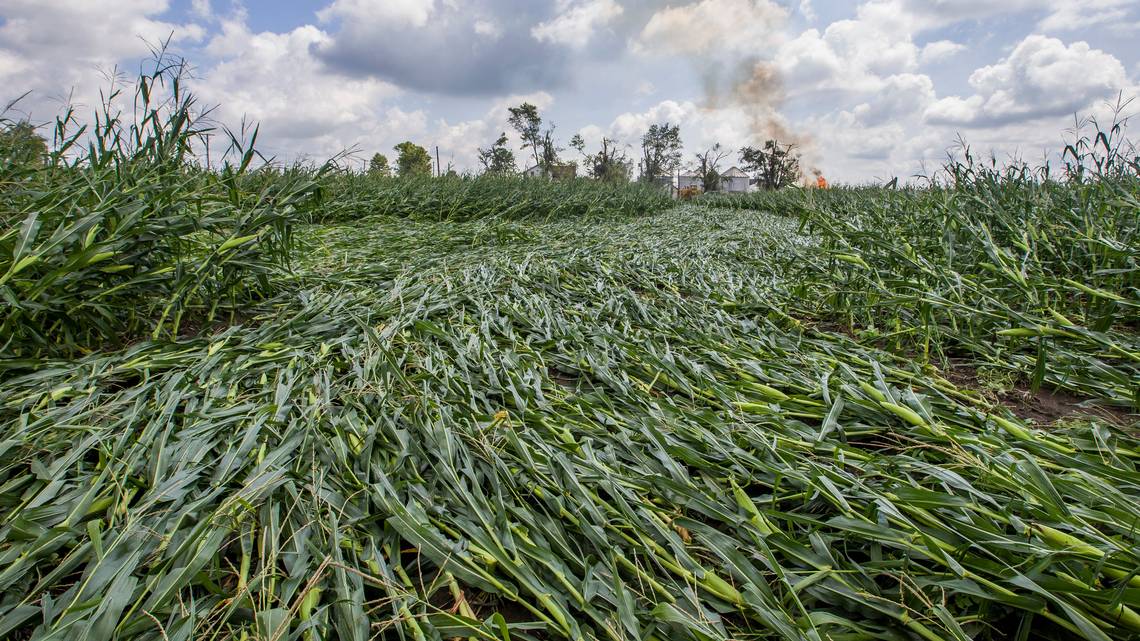A major thunderstorm complex earlier this week caused massive damage to crops in the U.S., especially to cornfields in the U.S. heartland. Winds gusted up to 112 mph in parts of the storm and left a train of destruction across Iowa, Illinois and Indiana.
Reuters reports Monday’s derecho potentially impacted some 10 million acres of Iowa farmland and millions of bushels of grain storage in the top U.S. corn growing state, Iowa Agriculture Secretary Mike Naig said.
Early estimates show that tens of millions of bushels worth of commercial grain storage — as well as millions of bushels of on-farm storage bins owned by producers — were either impacted, destroyed or severely damaged by the storm. Bin losses, ahead of this fall’s harvest, could leave some farmers scrambling to find storage for their crops.
How much of the downed corn will be able to produce a viable crop this fall is unknown, and it is too early to put a total value on the damage to the crop and the state’s overall agricultural sector, Naig said.
According to a USDA report dated Aug. 1, farmers in much of central and eastern Iowa had been expecting near-record yields with healthy plants that could bounce back. For now, much depends on whether the plants snapped off or were just bent over by wind, the Associated Press reported.
 “There’s a lot more breakage or pinching of stalks than I thought there was now that I’ve been out and looked at more of it. That, of course, essentially has killed the plant,” said Meaghan Anderson, an Iowa State University extension agronomist who works with farmers in nine central Iowa counties.
“There’s a lot more breakage or pinching of stalks than I thought there was now that I’ve been out and looked at more of it. That, of course, essentially has killed the plant,” said Meaghan Anderson, an Iowa State University extension agronomist who works with farmers in nine central Iowa counties.
Corn is flat on the ground in numerous fields in the region, Anderson added. The corn stalks had grown to full height and were in the final stages of producing ears and filling them out with kernels. Modern corn varieties can grow up to 8 feet tall making them vulnerable to powerful straight line winds.
For plants that were bent, and stalks not broken, there’s some hope, with a significantly reduced yield. But it will be difficult to harvest. If the stalks snapped, the plant will die. Those fields will be chopped and used as livestock feed.
Here are some resources that could help growers assess any damage they have and deal with the crop as harvest approaches:
• Tips for Harvesting Downed Corn, and Dealing With the Aftermath
• Combine Adjustments for Downed Corn






